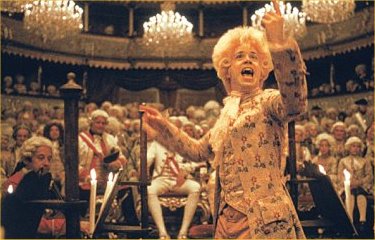ARTICLES BY JOAN
Upon Purchasing a Violin
There are many factors to consider when purchasing or perhaps renting a violin. First of all, the length of the student's arms will determine which size of violin is needed. For instance there are 1/2, 3/4, and 4/4 sizes. It is not a one size fits all scenario. For students who are still growing, there is no need to spend much money on a violin that they will outgrow. In this instance, renting or buying a cheap miniature violin is the best option. Also if a student is a beginner and has the stature for a full size (4/4), renting or purchasing a non-expensive violin is also the way to go. I started on a full size and my violin cost $100, however that was a long time ago. As the student progresses in ability, so will their need for a better quality instrument. I was lucky enough to be assigned a really good midrange violin when I was in the orchestra program in middle school and high school. (Therefore it was something I didn't have to pay for). Nevertheless all schools are not like that, and unfortunately many schools do not even have orchestras. If any of these obstacles are at hand, the best advice I have is to purchase or rent a midrange violin. School wise, if a student has gone through middle school and high school playing and they want to continue, then is the time to get out the big bucks and pay for a professional violin. However this should not be done until late high school, when the student is perhaps college shopping. If the student starts as an adult then obviously we will not apply a middle school and high school time line to it. We will take a different approach based on the student's increasing abilities.
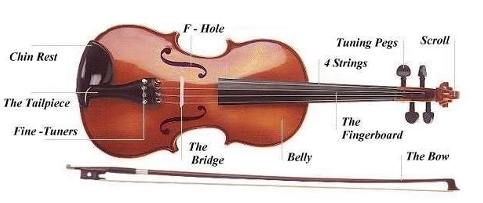
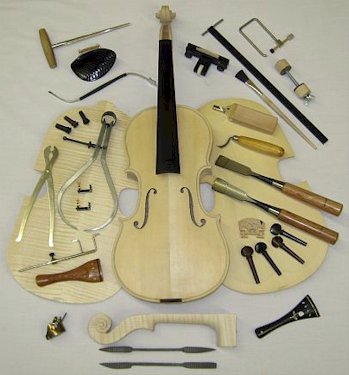
Items Every Violinist Should Have
- Shoulder Rest - keeps the violin from sliding and helps you hold it upright.
- 2 Packs of Strings - accidents happen, make sure to have an extra pair of strings.
- Hill Peg Compound - all tuning pegs slip, this helps with that problem.
- Hill Rosin - you do not necessarily need Hill rosin, but at least try to get a dark rosin if it is available.
- Pitch Pipe - this is helpful for students who do not have a piano or any other aide in tuning.
- Fine Tuners - most violinist have at least one fine tuner (on the E string, the highest string) however many times students in middle school and high school use tuners on all four strings.
- A Cloth - something around the house like a wash cloth will work, this is to clean the rosin residue from the violin.
Playing in an Orchestra
Playing for and being a single member of an orchestra is a number of things. It is educational, boring, tedious, exciting, exhausting, and rewarding. The thing you do most in an orchestra is rehearse. I would say it is 80% rehearsal and 20% performance. And that is just the time that you are all together as an orchestral unit, not including personal practice time, which is all together different. Being in an orchestra is what I imagined being in the military would be like. Instead of weapons and machinery we have instruments and instead of built agile bodies we have musical skills. We become a “militia” of strings, brass, winds, and percussion all focussing on a single goal, sound. We strive to mould and perfect our sonorous output to the highest quality possible.
As I said previously, being a part of an orchestra is a number of things. Rehearsal gets tedious with all of the stop and go. You take four measures and play it four times in each section separately. Or “oh no, the winds are having trouble here, me must have them play by themselves until problem is fixed.” But, the end result is better for having gone through the tedious struggle, otherwise these musical problems would not have been ironed out. So we revel in our struggles. It's about defeating our weaknesses.
Rehearsals are pretty pointless without personal practice. It takes quite a few hours to go through an entire symphony, plus the other concertos or overtures or what have you. This practice has to happen slowly so you the performer can have to time to comprehend the music, the rhythm and the sound of it, or basically the gist of it. Once the music has been gone through a couple of times, then you can work on “problem areas” the parts that are technically demanding. And then finally you can practice speeding up a piece to proper tempo or even slowing something down if need be. Most of all, practice builds confidence. You will be a lot more comfortable once you know you've been around the block a few times with your music. You won't be unpleasantly surprised in rehearsal in that something is complicated. When you don't practice you will find rehearsals unbearable and confusing. And sure like all other self-motivated tasks that we do, practice is hard to “want to do it” so we have to overcome by doing it anyway. You always feel better after you do.
The performance is always the most rewarding experience out of all of these. The performance is your chance to share your music with an audience. And also there is no stop and go, it is all go and energy and that's the fun part. Performing is all about connecting and ignoring your audience. You ignore, because you are focused on your music and you connect when you move with the music, your personal energy radiates on stage, therefore connecting with your audience. And there are better ways of doing this than pompously whipping your bow around and throwing your hand up in the air during pizzicatos. The point is not to stand out because in an orchestra you are not a soloist, you are a particle of an organized cell, it hardly gives one a right for self-exaltation. Being attentive and excited make you a good orchestral performer, as well as being aware of your facial expressions and knowing whether they are serious, ugly or pleasant. All of these little things make a difference in a performer.
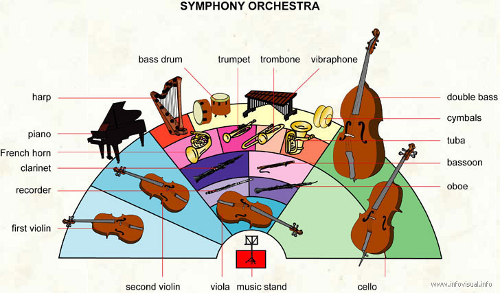

Listening to Music
“Classical” music has a braided existence of ennui, moments of exhilaration, and moments of absurdity. It is not a casual music, and it is rarely cathartic like a pop anthem rock song. The more “Classical” music is studied i.e. listened to, the more it becomes a part of you, like your favorite pop tune that you whistle. Art music, instrumental or choral, or both require patience to love. This “art music” has to be cultivated in your musical garden, by listening. Listening is the watering of your “Classical” garden, if you will. Stravinsky once said that he wanted to compose music that people would walk on, essentially so-called “elevator music.” But isn't that what “Classical” music has become to our culture, with all of our pop sensibilities? We walk on it, it is background music, like that when you are put on hold on the telephone.
As a musician, I invite you to listen to that “background” music. In my musical training I was first and foremost trained to listen and perceive. And so I do. When I'm in the supermarket I hear the music playing over the intercom, and I'll occasionally sing along if I'm so inclined. I can pick out one of my favorite songs playing in a crowded restaurant. Our culture so much teaches us to block out and ignore noise/music by playing in continually. So I say listen, even if it is instrumental “Classical” music. Imagine what the musicians look like playing their music, imagine what instruments might be involved in such a piece. Imagine beauty or passion, or whatever you think the composer was trying to depict by their composition. Music without words gives us a lot of work to do mentally, and a lot of times we do not know what to do with that freedom. We must take heart anyway.
My Musical Heros
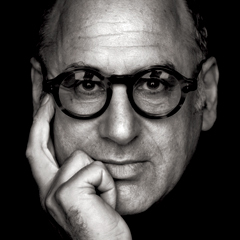
Michael Nyman
Michael Nyman is one of my all time favorite composers. His style is considered Minimalist and he is renowned for his film scores. However he does not prefer to be pigeon holed as such a composer but rather as a creater of a larger range of "classical" pieces. I was first introduced to him through film as many others have been as well. in 1993 the academy award winning movie The Piano broke on the scene thus exposing me to the accompanying soundtrack.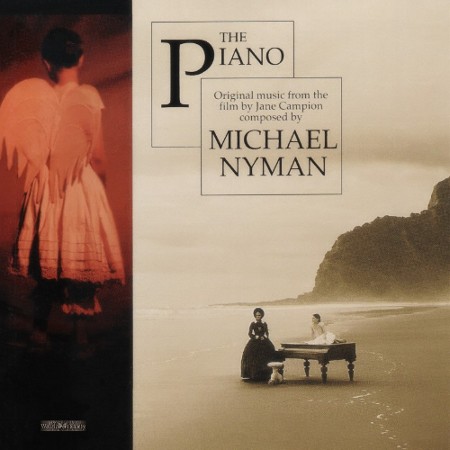
I immediately fell in love with Nyman's bizarre yet hauntingly beautiful music. This love that I acquired through listening to Nyman's music made me want to search out his other "non-film" compositions which were just as exquisite. In fact I became obsessed with the style in which Nyman wrote in, Minimalism. This led me on a journey with the music of Philip Glass, Steve Reich, Terry Riley and Clint Mansell. However in accordance with my masters degree in musicology I chose to write my thesis over Nyman's one-act opera The Man Who Mistook His Wife For A Hat, which is an adaptation of neurologist Oliver Sacks case study under the same title.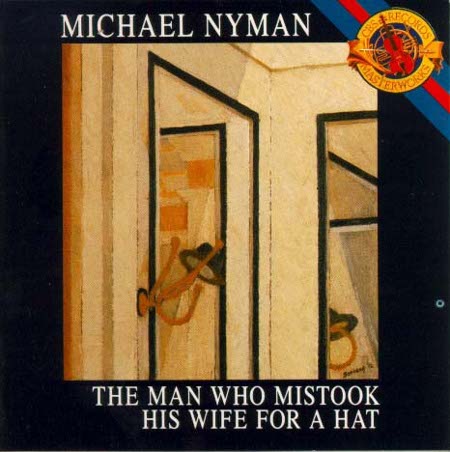
My thesis is entitled "Michael Nyman: The Man Who Mistook His Wife For a Hat" It is currently being processed in preparation for the publishing process.
Nadja Salerno-Sonnenberg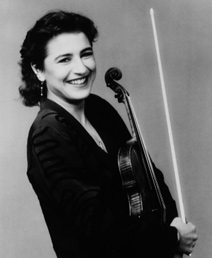
I daresay that she is the most passionate violinist out there. She is a great inspiration because not only is she technically good but she is creative at expressively conveying her talent on the violin which in my opinion makes a superb musician. Nadja brings a sobering humanity to an instrument which is too often judged as two-dimensional. In other words critics and professors want "classical" music to be played one way. And which way is that? Robotic? Historically correct? I daresay once again that these ideas of a circumspect music are utterly absurd. That is why I like Salerno-Sonnenberg, because she breaks the "rules" of conventional classical music which makes for an enjoyable listen.
She also came out with an intriguing documentary about her life as a professional violinist.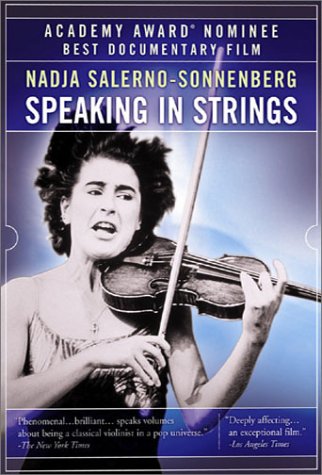


A Violinist's Brain
The Sensory Cortex- The part of the brain that contains tactile feedback from playing an instrument or dancing.
In violinists the part of the Sensory Cortex that deals with the actions of the left hand (the hand that plays the notes) is larger than the part that deals with the right hand (or in other words the bow arm). And in general, the Sensory Cortex is larger in violinists than in other people.
The Genius Theory
Are certain children prone to being child prodigies and musical geniuses? According to the musician and neurologist Daniel J. Levitin this is not the case but rather presents the 10,000 hour theory. This theory states that the logged hours of practice make up the musician rather than a special predisposition in ability to learn an instrument. He gives the stunning example of Mozart (whom everyone considers a child prodigy or genius). "The classical rebuttal to the ten-thousand-hours argument goes something like this:
